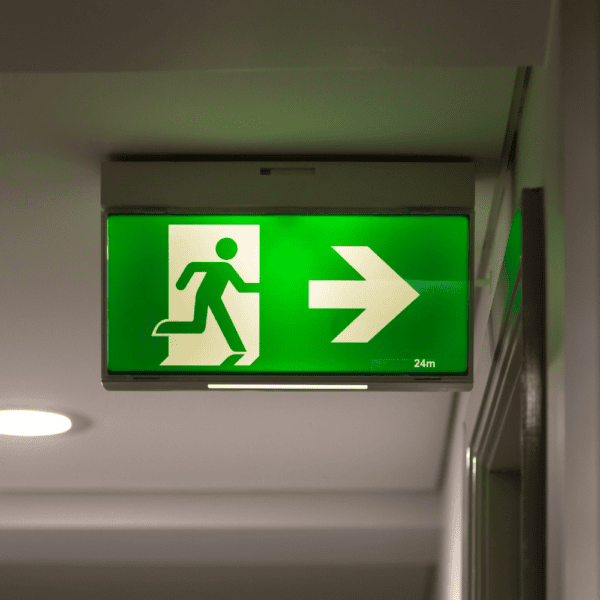Some 27 years ago on my 18th Birthday I was with the original CEN 169 Working group 3 assigned the duty to achieve harmonisation of light levels resulting in EN 1838 and the current light levels.
Prior to this harmonisation the old BS had always stated that consideration to higher light levels should be provided for elderly or persons who live with macular degenerative issues. Sadly, as with many elements of the older versions of the standard it did not offer guidance. The latest 2016 edition does give helpful guidance on many areas, but the actual light level is left open to a suitable written fire safety risk assessment in conjunction with development driven by the auditable documents at the back of the standard.
While the human eye is adaptive and EN standards are to be encouraged offering support in terms of a 40:1 maximum to minimum uniformity diversity ratio.
Do we all really understand what this offers?
Users are often surprised by the perceived lowlight level for emergency considering in mains healthy the CIBSE guidance recommends 100 lux for corridors so literally only 1%. This 1 lux minimum should exclude reflectance and be calculated with third party verified performance data. The group of European member states have their own individual interpretations, and many have selected higher levels such as 2 lux in Holland and 5 lux in Italy. Maybe we should take guidance from this and at the next revision of EN 1838, that will precede the next BS5266 part 1, look at the harmonisation process again with guidance for specific situations.
0.5 lux for open areas is again an area where uplift can only enhance the safety offered to users. 10% of the mains light level recorded as an average or 15 lux whichever is the greater for high risk task areas seems to work well. Then corridors and open areas could both be locations associated with higher risk for a number of reasons and so could well benefit from enhanced levels.
Back in 2012 The Society of Light and Lighting produced fact file No.8; Lighting for people who are visually impaired. The human eye loses sensitivity during life and a 70-year-old eye can require up to three times as much light as a 20-year-old for the same visual performance. This article highlights several areas to consider including glare and colour rendering but is direct in its preference to exclude photoluminescent solutions in favour of specific powered way guidance systems.
The impact of higher light levels could promote an uplift in the need for centrally supplied compliant EN 50171 systems. The current market offering of LED’s needs to be engineered carefully matching initial inrush from the drivers to power the load when required in an emergency.
The most recent meeting of EN 1838 and CEN 169 WG3 in Frankfurt has started the discussion and I look forward to keeping you posted on developments arising from the next meeting due to take place in October 2019.
Author:
Ian Watts was co-opted onto the committee responsible for the drafting of BS.5266 part 1 in 2015, as the independent industry expert on new technology. As Business Development Manager for KOHLER Uninterruptible Power he has contributed to the drafting of BS.7273 part 6, a draft standard currently out for public comment to look at fire interface devices including the integration of dynamic emergency lighting systems. Sitting on the CEN 169 working group 3, tasked with this same development provides him with a European insight into this exciting market. He lectures for CIBSE and has been a trainer for the FIA since 2012.




